Florida is home to a diverse community of native bees. Various species are found all across the state, including bumblebees and mason bees, as well as leafcutters and carpenter bees. The importance of these pollinators in Florida ecosystems cannot be overstated; they play an essential role in the reproductive process of many plants, including crops and flowers. Furthermore, they also have direct economic benefits due to their ability to provide honey and wax products that can be sold or used by local industries. Despite this, many of our native bee populations are endangered due to threats like pesticide use, climate change, and habitat destruction. In this article, we will talk about various bees in Florida and their importance.
Table of Contents
Bumblebees

In Florida, bumblebees play a vital role in the ecosystem. Their significance goes beyond providing essential pollination services to the local environment and fostering diversity among flowering plants. Bumblebees also serve as a crucial food source for other wildlife residing in the region, further contributing to the delicate balance of nature. Their presence sparks fascination among scientists due to their complex social structures within colonies and the diverse survival strategies they employ to flourish in the wild. While occasionally being considered pesky in our backyards and gardens, these remarkable creatures are an integral part of the state’s natural tapestry and contribute significantly to its ecological richness.
European (Western) Honey Bees
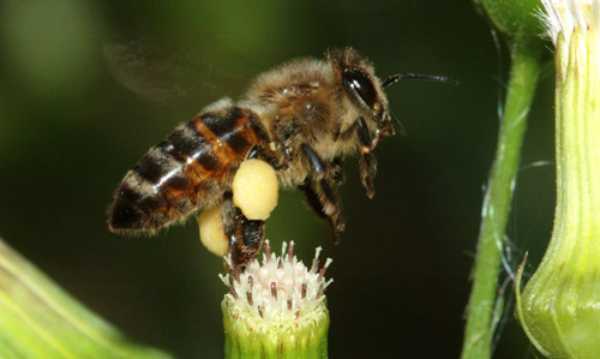
For decades, European honey bees have played a vital role in Florida’s ecosystem. These diligent and tenacious insects toil endlessly, producing delectable honey and pollinating a wide variety of plants, including essential agricultural crops that nourish people throughout the state. While other insects also contribute to pollination, European honey bees stand out as the most efficient and reliable pollinators, becoming an indispensable asset in promoting agricultural sustainability and ensuring food security in Florida. Moreover, beekeepers actively engage in managed hive migrations, further enhancing honey production and supporting the continued well-being of these industrious bees.
Large Carpenter Bees
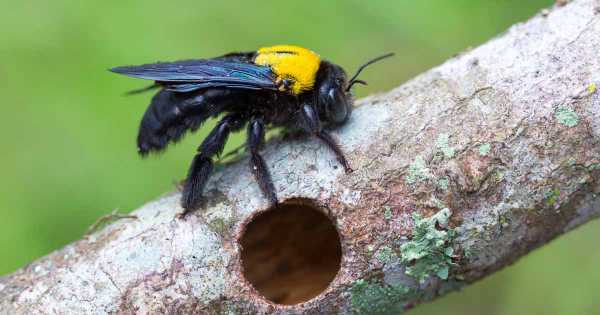
Large Carpenter Bees, named for their construction of extensive nesting galleries in wooden structures such as bridges, decks, and fences, showcase their exceptional nesting skills. While they bear a striking resemblance to bumblebees, the key difference lies in their stinging capability, reserved only for females, which they rarely employ unless provoked. Instead, these diligent creatures predominantly employ their robust mandibles for nest construction, exemplifying their prowess as skilled carpenters.
During the warmer months, one can observe these bees diligently collecting nectar from a diverse range of flowers in the region. As they buzz from blossom to blossom, they play a vital role in biotic pollination, transferring precious pollen between plants. This indispensable pollination process sustains life in numerous native ecosystems throughout Florida, making Large Carpenter Bees a crucial and valued species in the state
Small Carpenter Bees
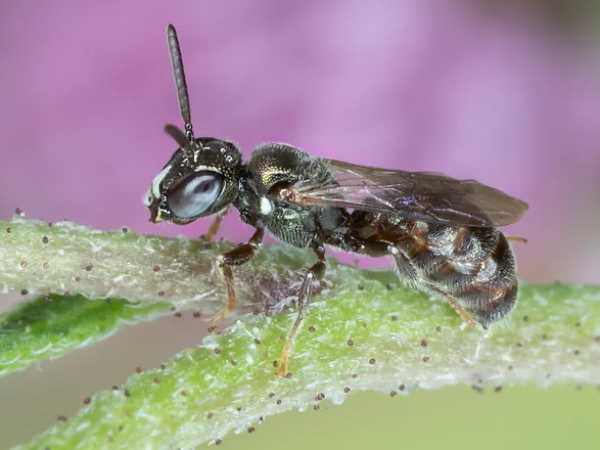
Small Carpenter Bees, native to Florida, play an important role in maintaining the local ecosystems across the state. These tiny pollinators act as a crucial step in helping many plants reproduce, forging an essential link in nature’s cycle. Female small carpenter bees use their long pointed mouthparts to gather nectar and pollen, which they store in their furry hind legs so that they can transport it back to the nest. The pollination of plants helps encourage the growth of vegetation and flowers throughout the area.
Since agricultural production, fruit, and nut cultivation specifically, greatly relies on pollinator species, small carpenter bees help provide a service that is both highly beneficial to humans as well as wildlife around them. They are capable of providing moments of wonder for lazy summer days and should be a cause of celebration throughout TN due to the importance they have on local plant life and human agriculture alike.
Long-Horned Bees
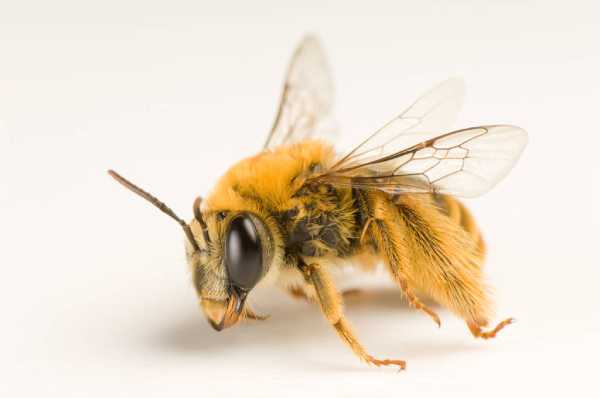
Florida is home to a wide variety of bee species, including the long-horned bee native to the area. Long-horned bees are unique among bees in that they have longer antennae than others, giving them an entirely distinct look. These impressive insects are integral to Florida’s ecosystem, not only serving as pollinators for many plants but also providing food for countless other animals. Although their population has become more sparse due to increasing urbanization and the use of pesticides, those who still manage to survive to serve an irreplaceable role in our environment.
Sweat Bees
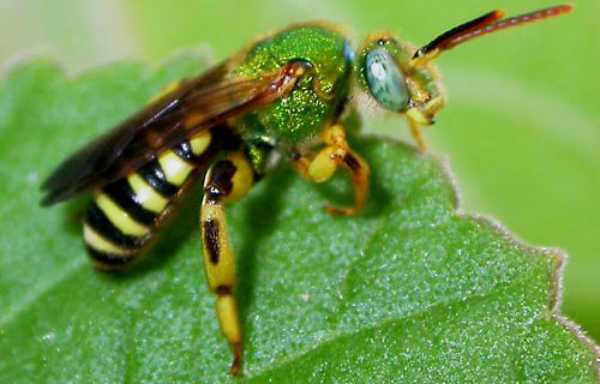
Sweat bees (Halictidae) can be found buzzing around in many places throughout Florida. Named for their attraction to human sweat, these tiny insects are generally harmless and even beneficial to humans. Sweat bees vary slightly in size, but most of these species measure about 8mm or smaller and collect pollen for pollination as they buzz among plants. These pollinators also play an important role in the local food chain; many animals rely on them for sustenance during particular seasons. Despite being an essential part of the natural environment, it is important to remember that it is best not to touch sweat bees since they may sting if handled inappropriately.
Squash Bees
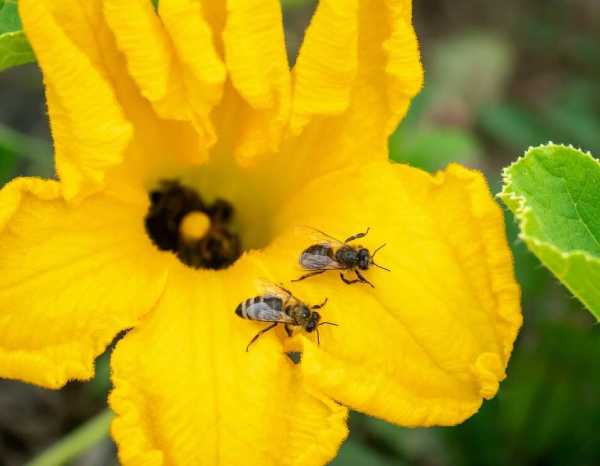
Squash bees in Florida are a marvel of nature. These incredible insects, native to the United States, work diligently to pollinate summer squash and pumpkins. Squash bees live in large aggregations, making their buzzing hum easily heard around gardens and farms in certain parts of the state. When collecting pollen from plants, the bees not only benefit from rewarding sugary nectar but also their own survival as they bring food back to the larvae waiting at home in the hive or burrow. With a lifespan of about four weeks during peak season and no stingers – so even humans don’t have to worry about them.
Digger Bees

Digger bees in Florida despite the small size of their habitats and low population numbers, play a surprisingly significant role in the local ecosystem. This native species can be seen throughout much of the state, where they spend their time nestling amongst wildflowers, shrubs and woody vegetation. During summer months, these efficient pollinators help to maintain healthy plants by transferring valuable pollen from one flower to another; as a result, they are responsible for assisting a myriad of plant species in producing high-quality fruits. Furthermore, their ability to improve soil quality further reinforces their importance in sustaining local ecosystems.
Polyester Bees
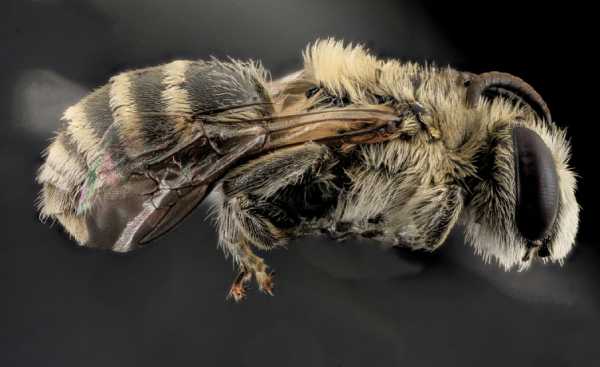
Polyester Bees residing in the rolling hills and lush meadows of Florida, Is an unlikely creature that has taken up residence. a predominantly black and yellow striped species of bumblebee, have been spotted across the state. These bees are unique not only in their vibrant colouration but also in their tolerance for colder temperatures. While other bees struggle to survive frigid winters, Polyester Bees don’t seem fazed no matter how low the temperatures dip. Operating throughout all four seasons, these creatures can be hard to spot as they expertly weave through flowerbeds and down woodland pathways.
Masked Bees

Masked bees have recently been spotted in Florida! This unusual and mysterious species of bee has the unique trait of wearing a “mask” to protect its vision from dust and pollen. Members of this species are known for their yellow and black stripes, as well as long antennae that help them navigate through their environment. While these fascinating masked bees appear to be a welcome addition to Florida, further study is needed to understand the potential impact they could have on the native bee population.
Cuckoo Bees
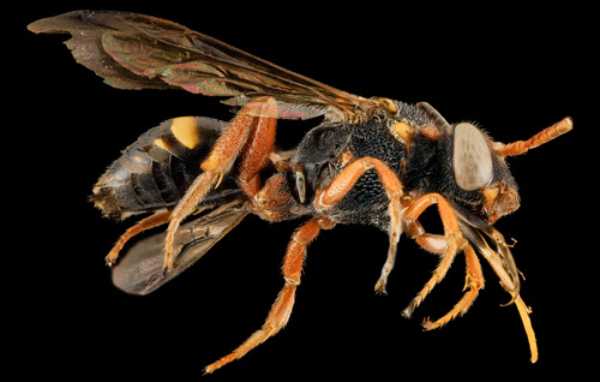
Cuckoo Bees are something of a mystery in Florida. Found throughout the state, these solitary invertebrates specialize in parasitizing other bees and have evolved numerous physiological adaptations to help them do so. Their fur-like coats make them almost invisible to many other species and they’ve even become adept at breaking into others’ nests, laying their eggs there unobtrusively.
Mason Bees

Mason Bees are remarkable insects found in Florida and other parts of the U.S. Not only are Mason Bees attractive and fascinating to watch, but they also play an important role in the environment. These solitary bees act as pollinators, aiding in the process of plant reproduction and consequently helping sustain our ecosystem. Unlike most bee species, Mason Bees are not aggressive or dangerous—they don’t sting! With their help, farmers and gardeners can ensure a strong crop yield each season.
Leaf Cutter Bees

Leaf Cutter Bees are among the most industrious of insect species, and they are indeed essential contributors to Florida’s ecosystem. Though small in size, often measuring only about 7 millimeters in length, these bees play an enormous role in maintaining local vegetation, pollinating flowers, and ultimately ensuring that fruit-bearing plants remain healthy and productive. They derive their name from their habit of cutting out shapes from leaves in order to construct their own nesting burrows; this labor-intensive process results in gleaming squares and circles that can sometimes be seen on trees all around the Volunteer state.
Miner Bees
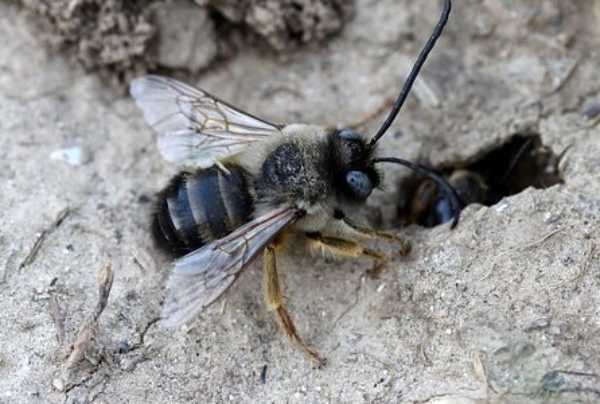
As their name implies, miner bees spend a large amount of time underground creating holes to build nests where they lay eggs that eventually become young miner bees themselves. In the summer months, they often surface and can be found burrowing through the flowers along roadsides, parks, wildflowers, and gardens. Their flying styles usually involve left s-shaped patterns as they hover from one flower to another, which adds to their allure along with the eyespots on their abdomen.
Reference:
- https://www.floridamuseum.ufl.edu/science/five-facts-bees-in-florida/
- https://www.fdacs.gov/Agriculture-Industry/Bees-Apiary/Honey-Bee-Protection-in-Florida
Next to read :
Bees in Tennessee (13 Types With Pictures)
Bees in California (13 Types With Pictures)
Bees in Texas (13 Types With Pictures)

Zahra Makda
Growing up enjoying the beauty of my village, a good passion for nature developed in me from childhood. Following my passion for the natural world, I have chosen zoology for my graduation, during my undergraduate degree, I participated in many nature trails, bird watching, rescues, training for wildlife conservation, workshop, and seminars on biodiversity. I have a keen interest in invertebrate biology, herpetology, and ornithology. Primary interests include studies on taxonomy, ecology, habitat and behavior.








